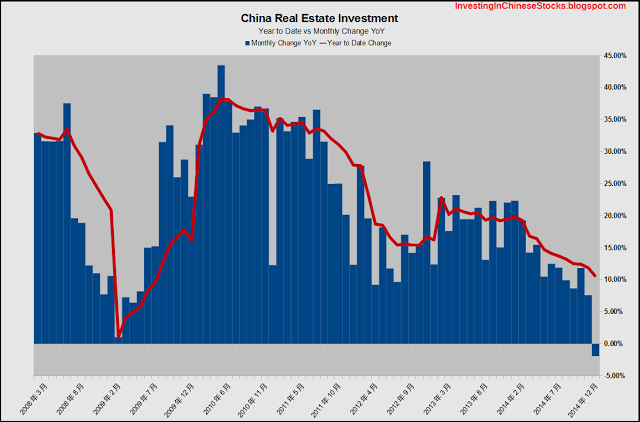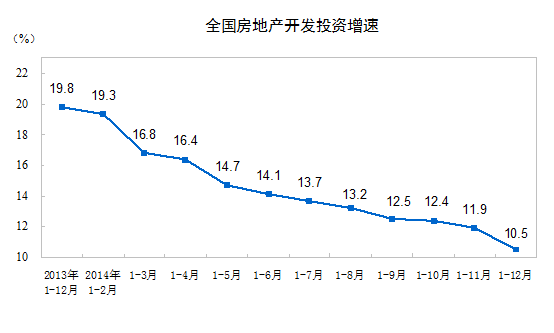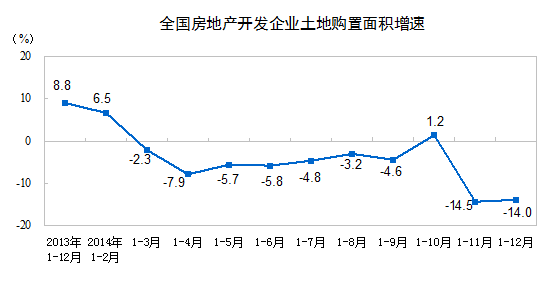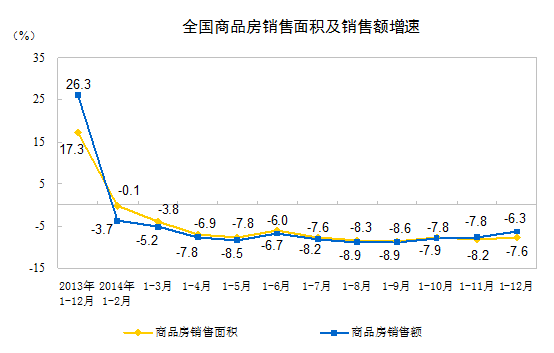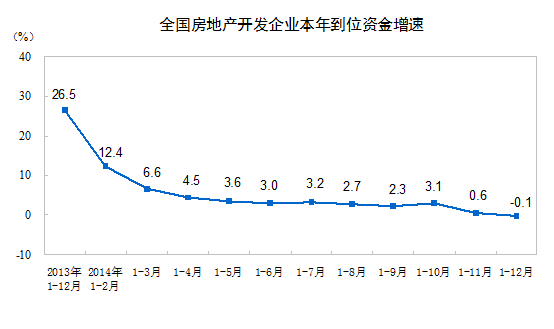Cross-posted from Investing in Chinese Stocks.
The headlines said 10.5% growth for real estate in yesterday’s Chinese GDP figures, but that was the year-to-date figure. Chinese real estate investment in the month of December 2014 was down 1.9% from December 2013. The lowest growth rate during the financial crisis was 1% year-on-year growth in February 2009.
Since the trend is still down, the headline number in 2015 could well be negative too. To give an idea of what that means in terms of GDP, consider some numbers tossed around by analysts: Man Made Chinese GDP
[Soc Gen] In summary, we think that real estate investment growth will continue to trend lower, likely to the level of 5% year on year (from 12.5% in June), a level last seen during the 2009 downturn. The IMF once estimated that a 1% decline in China’s real estate investment would shave about 0.1% off China’s real GDP within the first year. And so a 7.5ppt deceleration in real estate investment growth would drag down GDP growth by about 0.75ppt.
If the December growth rate represents trend and the IMF model isn’t bunk, GDP should be shaved by 1.4%. From the latest 7.3% rate in Q4, that comes to 5.9%.
Here are the official charts:
It was only two weeks ago that I posted Beijing New Home Sales Surge To 5-Year High in December
Even though existing home sale prices are down nearly 6% yoy according to CREIS data, new home prices are up 1.8%. Sales surged in December, up 62% mom and 73% yoy. Sales hit 19,893 units, second only to the December 2009 total of 20,516 units.
The final week saw sales of 6551 homes. Since then, sales have fallen every single week, to only 1955 in the past week, a drop of 70%. As mentioned in that post, part of the boost was a statistical fluke due to owner-built housing being added into the numbers.
The excuse for the moment, which has some validity, is the upcoming Spring Festival. Many people buy homes over the Chinese New Year because they have time off to look at homes and developers offer deals. The holiday is late this year, February 19. Effectively, it will last until the start of March. Should this “window” of low activity persist, we will not know until March whether this is a lull or a retreat in the market.
Beijing is an important part of the bifurcating Chinese housing market story. If there’s a rebound, it will confirm the housing story is a localized one. If it turns out to be a bear market bounce, the mood in the market will swing decidedly negative. Stories such as Hangzhou Butterfly Effect: Price Decline Hurricane To Sweep China will go from speculative to prophetic.
Until proven otherwise, I do believe this is a bear market. The bifurcation story is possible due to the reality of where housing over supply is located, but in a real bear market, they are few shelters from negative sentiment. The behavior of the oil, copper, iron ore and euro are the model: investors are insufficiently pessimistic; support fails, new lows are made.

